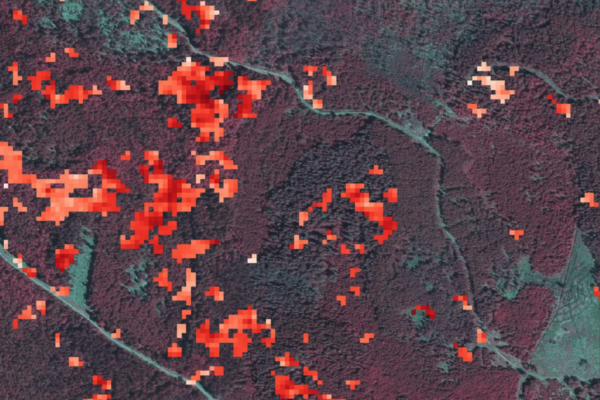Forests are natural carbon sinks, absorbing carbon dioxide from the atmosphere through the process of photosynthesis and storing it in the form of biomass. By managing forests in ways that promote carbon sequestration, forestry projects have the potential to make a significant impact on global carbon emissions.
In the process of photosynthesis, trees absorb carbon dioxide from the atmosphere and convert it into organic matter, which is then stored in the form of biomass, including leaves, branches, and roots. Over time, this stored carbon remains sequestered in the forest ecosystem, providing a long-term sink for atmospheric carbon. There are a variety of forestry practices that can be used to enhance carbon sequestration. For example, transition to sustainable forest management, and reducing deforestation and monitoring forest health contribute to the carbon reduction.
A scalable opportunity for carbon reduction
Forestry projects can vary in scope, from small-scale efforts to plant trees in urban areas to large-scale reforestation and forest management projects covering thousands of hectares. The scalability of these projects is a key factor in their potential impact on global carbon emissions. While small-scale efforts can help to raise awareness and provide local benefits, large-scale forestry projects have the greatest potential to reduce emissions on a global scale.
One example of a scalable project is the use of forest carbon offsets. This approach provides an efficient way for companies to meet their emissions reduction goals, while also supporting the growth of new forestry projects.
The benefits and challenges of forestry projects for carbon reduction
In addition to the environmental benefits, these projects also have the potential to create new economic opportunities. The development of industries and markets around carbon sequestration can create jobs and boost local economies. The potential for economic benefits also extends to the carbon market. As organizations increasingly seek to offset their emissions, the demand for carbon credits from forestry projects is likely to grow. This can create new opportunities for investment in forestry projects, which can further support their growth and scalability.
While forestry projects offer many potential benefits, there are also a number of challenges and limitations that must be addressed in order for them to be successful, such as measuring the baseline level, selecting reduction goals, measuring the forestry projects and proving the additionality. Also, the common length of the monitoring interval may result in considerable uncertainty in terms of assuring the performance and permanence of the reductions of carbon emissions.
Carbon trading through forestry projects
Once a forestry project plan has been established, it is audited against a third-party verification standards like Gold Standard or Verra. The carbon standard assists project developers in the validation of the project, registration of the offset emissions and verification of the project progress.
From a technical point of view, there are challenges associated with current practices and processes, such as lack of scalability and verification of cost and transparency. In order to move to scalable and affordable ways of working, methods and systems need an update.
Download our whitepaper and learn how carbon trading can be scaled to efficiently to mitigate the climate risks through efficient and reliable forestry projects.




